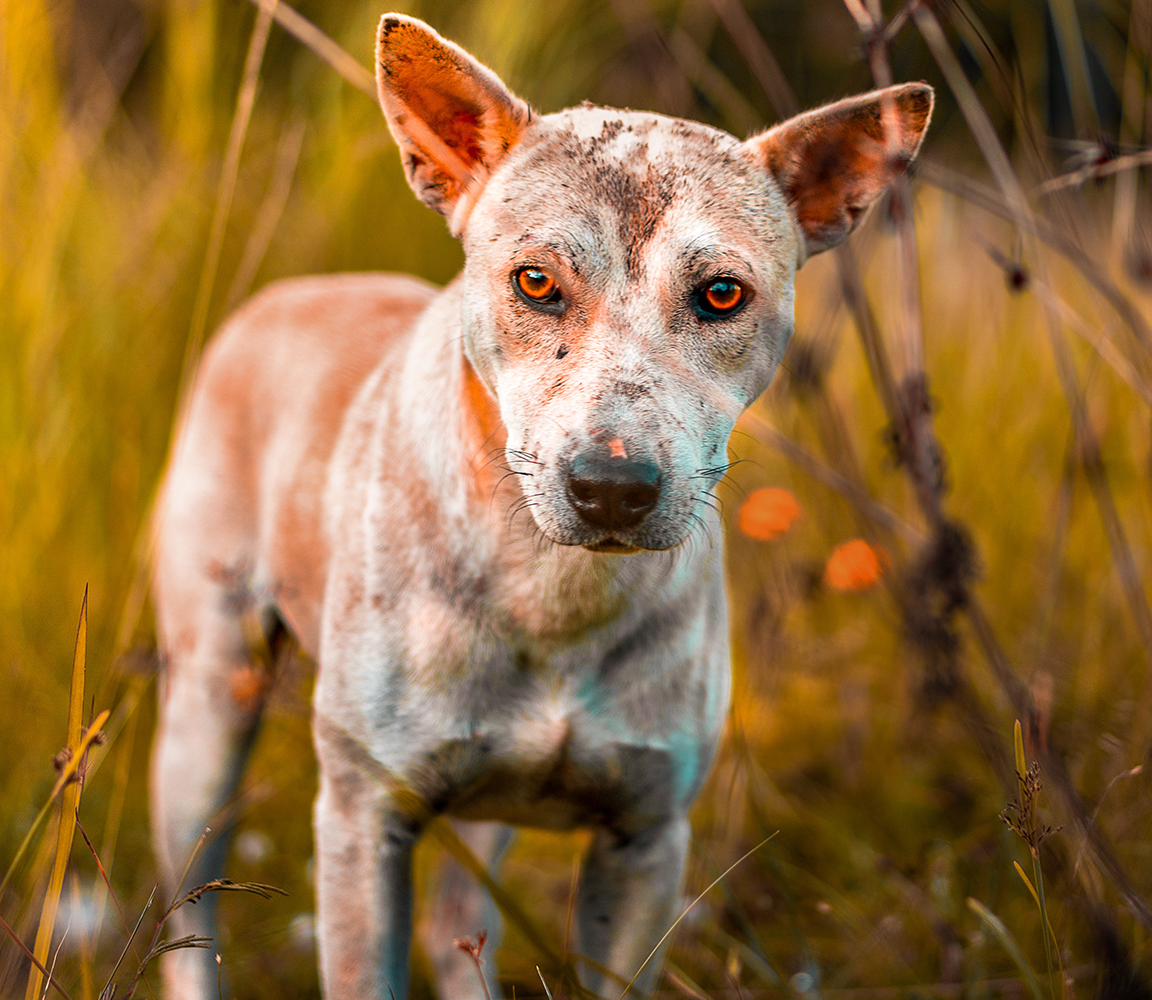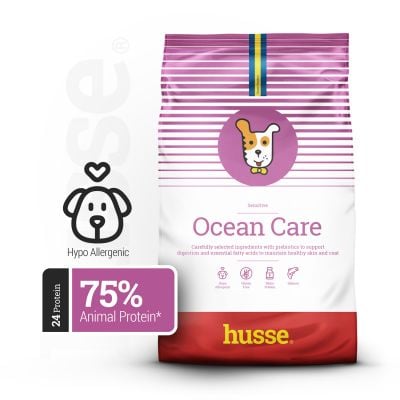Dog skin allergies - what are the symptoms and how to treat them?
Dogs
Sometimes, even despite a high-quality diet, you can observe that your pet's coat does not look the best. Additionally, the dog may scratch more often or even be restless and irritable. What is a dog's skin allergy and how to deal with it?

Dog skin allergy - what is it?
An allergy in a dog is nothing more than an innate tendency in the body to respond to certain substances with a negative response. These are substances that are harmless to the pet, but a misdirected immune system considers them poisonous and reacts with the body's defences. Allergies are extremely difficult to diagnose during the first visit to the vet. Additionally, a dog cannot be completely cured of allergies. Medications can be used to help heal skin inflammation and minimize itching. However, in order for allergy symptoms not to recur, you simply need to avoid allergens that sensitize your dog.
Types of skin allergy in a dog
There are three types of skin allergy in dogs. The first is inhalation allergy. This strain is caused by inhaled allergens, also known as environmental allergens. Dogs with a highly developed environmental allergy suffer from atopy or atopic dermatitis. Another type of dog allergy is a contact allergy, also known as allergic contact dermatitis. This type of allergy occurs when an allergic reaction occurs after direct contact with the allergen. Another type of skin allergy in dogs is flea allergy dermatitis, which is perhaps the most common allergy that occurs in dogs. Itching and skin lesions can also appear with food allergies.
Atopy in a dog
Contact allergy
Contact allergy is all those cases where the dog's body responds with an allergic reaction to direct contact with the allergen. Redness and local inflammation develop at the point where the allergen penetrates the skin. Contact allergy in dogs often occurs on the paws or abdomen - many allergens may be on the substrate. In dogs, a contact allergen can be rubber, cement, various chemicals, but also certain plants, such as ivy.
Flea allergic dermatitis
The development of flea allergy dermatitis, or FAD for short, occurs after a dog comes into contact with fleas. In this case, the most common allergen is saliva or flea venom. A strong allergic reaction occurs after a flea bite - one individual is enough for a dog to develop allergic symptoms. Your dog's skin becomes red and may become inflamed. Local alopecia may occur in the part of the body where the bite has occurred. An allergic reaction can last up to two weeks after the bite. It is the most common allergy in dogs, which is why it is so important to use special protective measures to protect your dog from flea attacks.
Food allergy
Like us, some dogs need an extra hit of fibre in their diet to ‘move things along'. Beetroot pulp, inulin and psyllium are fantastic fibre sources that will deliver good faecal quality. In addition to scouting for these ingredients in dog food formulas, speak to your vet about more creative ways to up your pooch’s fibre intake.


Dog skin allergy - how to diagnose it?
In order to diagnose an allergy in a dog, it is necessary to perform allergy tests. The dog is given extracts of popular allergens under the skin. For most allergens, the result is visible after just 15 minutes. Wait 48 hours for a reliable flea venom allergy test. In some cases, allergic reactions may occur with a significant delay after contact with the allergen, which makes diagnosis difficult.
In the case of food allergy, the only way to diagnose it is to follow an elimination diet. Exclude any common allergens from your dog's diet and keep it administered for 8 to 12 weeks. After this time, provocation tests can be carried out, i.e. gradually feeding the dog the popular allergens in the food. If your pet does not have an allergic reaction to the added ingredient after about 4 weeks, you can try another test with another ingredient.
Itching, inflammation and skin lesions do not have to be just a symptom of an allergy. If your dog's skin and coat condition are deteriorating, be sure to visit the vet for a checkup. The doctor will examine your pet's health, take blood for testing, samples from inflamed areas on the body, and in some cases a skin sample for biopsy.
Opus Ocean | Complete, grain free dry food for active dogs with digestive sensitivities & intolerances
Sensitive Digest | Hypoallergenic dry food for dogs with digestive sensitivities
Laxolja | Liquid supplement for dogs, cats & horses
Skin allergy in a dog - treatment
Other treatments for allergies
Ciclosporin is often used in dogs struggling with advanced atopic dermatitis. The drug has an immunosuppressive and immunomodulatory effect and directly affects the cells involved in the allergic reaction. Many owners choose cyclosporine because it does not have as many side effects as steroids.
Desensitization is also often used to treat allergies in dogs. During desensitization, the dog is given more and more doses of the allergen to gradually get used to his body. In this way, the intensity of the allergic reaction can be reduced. Desensitization is perfect when we are not able to fully eliminate the allergen from our pet's environment. Dog allergies can also be treated with desensitizing preparations for animals. These are products containing aqueous solutions of allergens. It is estimated that the effectiveness of desensitizing preparations is from 50 to even 80%.




























.png)




